Front Shoulder Pain
What is a Front Shoulder Pain?
Front shoulder pain, also known as anterior shoulder pain, is a common musculoskeletal complaint that can significantly affect an individual’s daily activities and overall quality of life. It refers to discomfort or pain experienced in the front of the shoulder, typically in the area around the joint where the upper arm bone (humerus) connects to the shoulder blade (scapula).
This type of pain can range from mild to severe and may be caused by various underlying factors, including injury, overuse, inflammation, or certain medical conditions.
It is more prevalent than posterior shoulder discomfort, often known as pain at the back of the shoulder. Usually, it results from a joint injury that inflames the tendons linked to the joint, making the rotator cuff incapable of supporting the glenohumeral joint. It hurts the front shoulder and the biceps.
Understanding the potential causes, symptoms, and available treatment options for front shoulder pain is essential in effectively managing and addressing this condition.
Anterior shoulder pain, also known as pain at the front of the shoulder, is caused by injuries or strains to the shoulder joint, muscles, and tendons.
Causes Of Front Shoulder Pain:
There are several causes of front shoulder pain, and they all manifest in slightly different ways. They could affect other soft tissues, any of the shoulder joints, or the shoulder muscles.
Below is a synopsis of each, and from here you can learn more about each person’s course of therapy and recuperation.
Rotator Cuff Tear:
- A rotator cuff tear is one of the most frequent reasons for pain in the front shoulder. This is where one of the shoulder’s primary stabilizing muscles is injured.
- Acute injuries like hard lifting, persistent degeneration from repeated overhead motions, or friction from bone spurs can all result in rotator cuff tears.
- Rotator cuff tears commonly cause a deep, dull pain inside the shoulder as well as weakness when lifting and twisting. When using the upper arm, there may also be a sudden, catching pain in the front shoulder.
Shoulder Impingement Syndrome:
- Shoulder impingement syndrome is a frequent additional cause of anterior shoulder pain.
- Shoulder impingement results in the shoulder’s bony gap closing, which damages and inflames the soft tissues.
- Impingement can result from a variety of factors, such as bone spurs, imbalanced muscles, friction from repetitive motions, and overuse.
- A severe, toothache-like pain in the front of the shoulder, a painful arc when moving the shoulder, weakness, and limited range of motion are common signs of shoulder impingement.
Biceps Tendinopathy:
- Biceps tendonitis is a further possibility for pain in the front shoulder.
- The area where the biceps tendon joins to the front of the shoulder may be inflamed, thickened, or torn when it has biceps tendonitis.
- The most common causes of biceps tendonitis are aging, excessive lifting, abrupt increases in shoulder use, and repetitive overhead movements.
- Biceps tendonitis commonly manifests as a deep, throbbing ache in front of the shoulder that is frequently worse at night, as well as soreness to the touch and a snapping feel with arm motions.
Frozen Shoulder:
- Front shoulder pain is frequently caused by a frozen shoulder, which is more common in women between the ages of 40 and 70.
- Adhesive capsulitis, also known as cartilage capsule thickening and scarring, is a symptom of a frozen shoulder.
- Frozen shoulders are linked to age, gender, specific medical disorders including diabetes, and shoulder traumas or surgeries. The underlying reason for a frozen shoulder is frequently unknown.
- Frozen shoulder occurs in three stages. Phase 1: front shoulder ache gets worse. Phase 2: Pain subsides, but movement is still limited. Phase 3: Symptoms gradually get better.
SLAP Tear:
- A SLAP rupture is one of the less frequent reasons for pain in the front shoulder.
- The labrum, a ring of cartilage on the shoulder socket, is harmed by a SLAP rip.
- Typically, falls, heavy lifting, repetitive overhead activity (such as throwing or racket sports), or shoulder dislocation result in SLAP tears.
- A SLAP rupture commonly manifests as a dull, agonizing ache in front of the shoulder, instability, trouble throwing, and limited arm movement.
Fractured Clavicle:
- A fractured clavicle is among the most frequent reasons why youngsters experience pain in their front shoulders.
- This occurs when the collarbone fractures at the front of the shoulder.
- Although they can also happen during delivery, clavicle fractures are typically brought on by falling sideways or onto an outstretched arm, an RTA, or a direct impact on the shoulder.
- A noticeable deformity, acute pain in the front shoulder, a snapping sound made when moving the arms, and diminished movement and feeling are all common symptoms of clavicle fractures.
Swimmers Shoulder:
- Front shoulder pain is often caused by a swimmer’s shoulder, which is the most prevalent injury among swimmers.
- Swimmers’ shoulders can occur as a result of improper stroke technique, imbalanced muscles, or overuse, especially if you increase your training unexpectedly.
- Swimmer’s shoulder is commonly characterized by deep, excruciating front shoulder discomfort, weakness, weariness, and laxity of the joints.
Symptoms for front shoulder joint pain include:
A serious shoulder injury may also be indicated by several symptoms and indicators in addition to front shoulder pain. If you experience pain in front of the shoulder joint, here’s a comprehensive list of other symptoms to check for:
- Inability to lift objects
- Visible abnormality resulting from trauma or injury that affects the humerus, shoulder, or clavicle
- Pain that gets worse at night or when you’re sleeping
- Two weeks of continuous agony that does not go away
- Incapacity to elevate the arm above or above a certain level
- Bruises or swelling near the shoulder region.
- Symptoms of inflammation or infection, such as fever, redness, or warmth
- Paralysis or numbness
- Sounds such as clicking, grinding, or popping when the arm is moved
- Additional odd symptoms (such as stiffness, shortness of breath, stomach pain, breathing difficulties, and skin crepitus)
Diagnosing anterior Shoulder Pain:
It can be difficult to identify the underlying reason for anterior shoulder pain. The first step is a medical examination to rule out any physical signs and symptoms of the many conditions that might give rise to front delt pain or shoulder pain.
X-rays will probably be taken as well to provide a clear picture of your shoulder’s condition.
More physical examinations will probably be required to find out how bad your shoulder pain is and how much range of motion you have with and without pain.
Among these tests include:
Dynamic Relocation Test: This test looks for subluxation, shoulder dislocation, and possible glenohumeral instability.
The Dynamic Stability Test measures how well the rotator cuff can keep the humeral head in the middle of the glenoid throughout the shoulder joint’s rotational arc.
The Kinetic Medial Rotation Test; is a tool used to distinguish between symptoms of instability and impingement in the anterior shoulder.
Surprise/Release (or Anterior Release) Test: This test measures pain or anxiety in response to placing the shoulder in the abduction, maximum external rotation, and ninety-degree elbow flexion positions.
Rowe Test: An examination of the shoulder that shows anterior instability; discomfort can suggest injury to the rotator cuff ligament or tendon, while positive apprehension or enhanced motion may suggest glenohumeral imbalance.
Treatment for Front Shoulder Pain:
Non-Surgical Treatment:
- Depending on the underlying reason, the optimal course of treatment for front shoulder discomfort may include a mix of the following:
- Take a break from activities that aggravate your shoulder so it can recover.
- Ice: to decrease inflammation
- Medication can help decrease pain and inflammation.
Exercises:
Shoulder Pendulum Exercises:
- Place your afflicted arm loosely hanging down while you bend forward and place your good arm’s hand on a table or chair next to you. In a lunge, place one leg in front of another.
- Your afflicted arm should swing forward and backward like a pendulum as you gently rock your body.
- Do these twice a day for two to three minutes in every direction.
- Variations: You can move your arm and shoulder in different directions by shifting the direction you rock your body.
- Moving both forward and backward as previously mentioned,
- from side to side
- Clockwise and then anticlockwise in circles
Best Advice:
- Instead of assuming the above-described lunge position, place your feet hip distance apart for the side-to-side and circular pendulum movements.
- All three orientations of the pendulum movements work the distinct rotator cuff muscles.
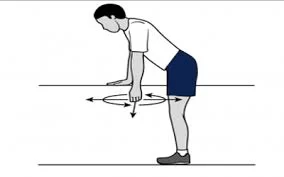
Shoulder Twist With Stick:
- With both hands held in front of you, palms facing up, and elbows bent, grasp a light pole, broom, or umbrella while seated. Throughout the exercise, make sure the affected arm’s elbow stays tucked in by your side.
- Using your dominant arm, push the stick out to the side horizontally until you feel a strain in your shoulder. 3-5 seconds of holding
- 10–20 repetitions, 1-2 times each day
- Progression: As long as the pain permits, hold the stretch. You can decrease the number of repeats as you extend the hold period. Your goal is to hold for 30 seconds, at which point 3–4 repetitions will suffice.
Best Advice:
- For some, the exercise is simpler when they cup the end of the stick in their afflicted hand. Whichever method you find most comfortable, be sure to avoid bending the wrist by keeping it straight.
- Maintain a forward-facing posture by keeping your hips pointed forward. Exercises like this are typically easier to perform while sitting down as opposed to standing up.
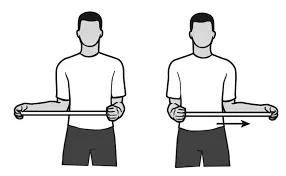
Towel Shoulder Stretch:
- Pull both shoulders back and place your hands behind your back while standing erect. Take hold of the afflicted arm’s wrist.
- Draw your afflicted arm gently in the direction of your opposite buttock and, if you are able, up towards your opposite shoulder. Three seconds of holding, then release.
- 10–20 times over
Advancement:
- Hold the stretch for a longer period, aiming for 20 to 30 seconds (remember, you can reduce the number of repetitions as you raise the hold time).
- See if you can extend the stretch any more after holding it for a short while.
- Using your free arm, drape a towel over your back, then use your other hand to hold onto the towel’s bottom. Gently pull the towel up and forward, causing the hand on the injured arm to move up your back and towards the other shoulder. Hold for a short while longer and then repeat.
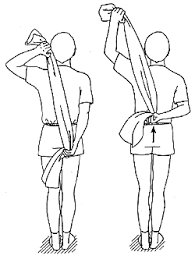
Static External Rotation:
- Move sideways and align with a wall. Rest the back of your hand against the wall while bending your elbow to a straight angle (you can use a folded towel for cushioning)
- Feel the muscles on the side and back of your shoulder tense as you gently press the back of your hand against the wall. 3-5 seconds of holding
- 10–20 repetitions, 1-2 times each day
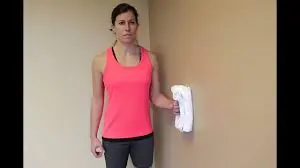
Static Internal Rotation:
- Place your palm against the door frame while standing in an open doorway with your elbow bent at a straight angle.
- Put your hand against the door frame gently. 3-5 seconds of holding
- 10–20 repetitions, 1-2 times each day
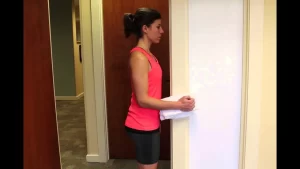
Surgical Treatment:
- Arthroscopic tendon repair: To repair the damaged tendon to the bone, doctors perform this surgery by making tiny incisions and inserting instruments and a tiny camera (arthroscope).
- Open tendon repair: An open tendon repair might be a superior choice in some circumstances. To repair the damaged tendon to the bone, your surgeon performs these kinds of procedures by making a bigger incision.
- Tendon transfer: Surgeons may choose to substitute a nearby tendon if the ruptured tendon is too injured to be reattached to the arm bone.
- Shoulder replacement: Shoulder replacement surgery may be necessary in cases with severe rotator cuff problems. Reverse shoulder arthroplasty is a novel operation that places the prosthetic joint’s ball onto the shoulder blade and socket to increase the stability of the artificial joint.
Summary:
Front shoulder pain is a common complaint that can result from various causes. It is typically characterized by discomfort or soreness in the front part of the shoulder, near the collarbone. This type of pain can be brought on by overuse or strain of the shoulder muscles, injury, or underlying medical conditions such as rotator cuff problems, tendonitis, or bursitis.
Front shoulder pain may also be referred from the neck or upper back. Depending on the cause, it can range from mild and temporary to severe and chronic, and its treatment may involve rest, physical therapy, pain management, or, in more severe cases, surgical intervention. Proper diagnosis by a medical professional is crucial for determining the most appropriate treatment and ensuring long-term shoulder health.
FAQs:
How do I know if my front shoulder pain is a result of a serious injury?
If you experience severe pain, loss of motion, or swelling, or if the pain persists for an extended period, it’s important to consult a healthcare professional for a proper diagnosis and evaluation.
What are some home remedies for relieving front shoulder pain?
Rest, ice, and over-the-counter pain relievers can help reduce discomfort in the short term. A physical therapist may also recommend gentle stretching and strengthening exercises.
When should I seek medical attention for front shoulder pain?
You should seek medical attention if the pain is severe, persists for an extended period, is associated with trauma, or if you experience loss of shoulder function.
Can poor posture contribute to front shoulder pain?
Yes, poor posture can strain the muscles and tendons in the shoulder area, leading to pain. Proper ergonomics and posture adjustments can help prevent and alleviate shoulder pain.
Can front shoulder pain be prevented?
Maintaining good posture, practicing safe lifting techniques, and avoiding overuse or repetitive motions can help prevent front shoulder pain. Additionally, strengthening and stretching exercises can be beneficial.
How much time does it take to get over pain in the front shoulder?
Recovery time varies depending on the cause and severity of the pain. Some minor injuries may heal within a few weeks with appropriate care, while more severe conditions may require several months of rehabilitation.
References:
Front Shoulder Pain: Causes & Treatment – Shoulder Pain Explained. (n.d.). Shoulder-Pain-Explained.com. https://www.shoulder-pain-explained.com/front-shoulder-pain.html
Rotator Cuff Injury Exercises: Strengthening & Stretching. (n.d.). Shoulder-Pain-Explained.com. https://www.shoulder-pain-explained.com/rotator-cuff-injury-exercises.html


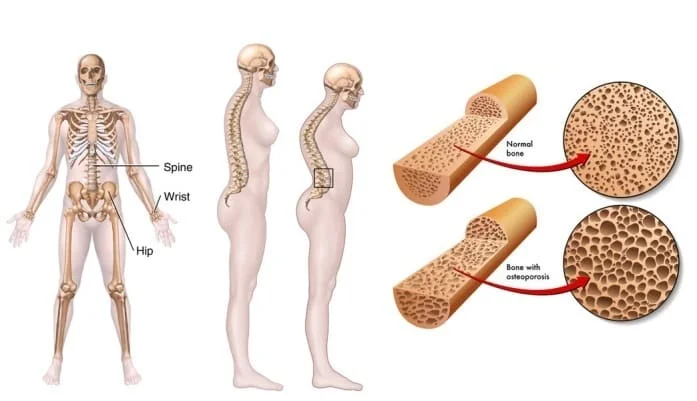
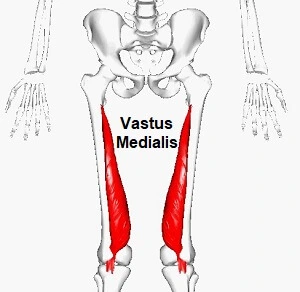

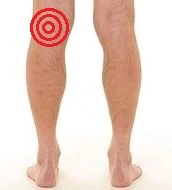

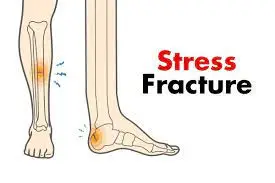
2 Comments